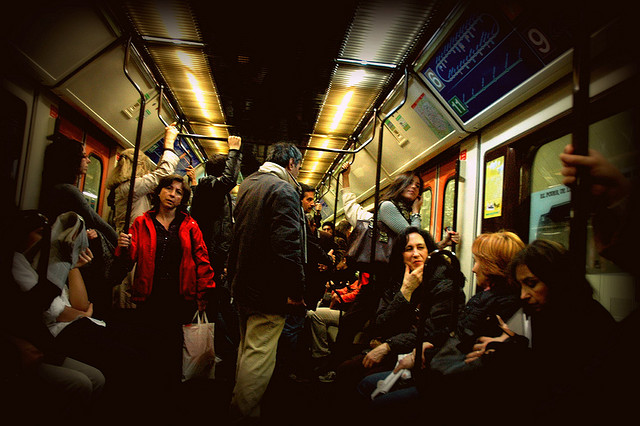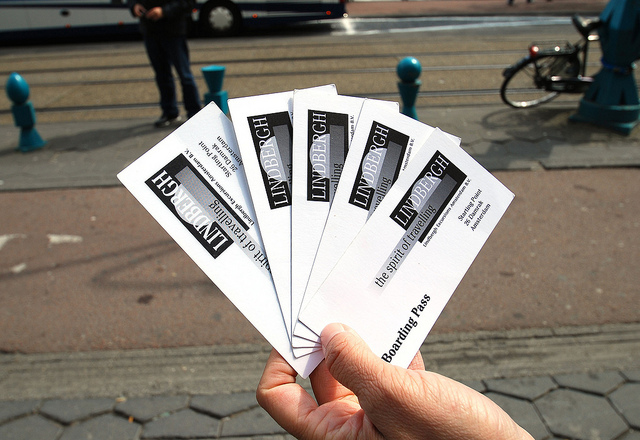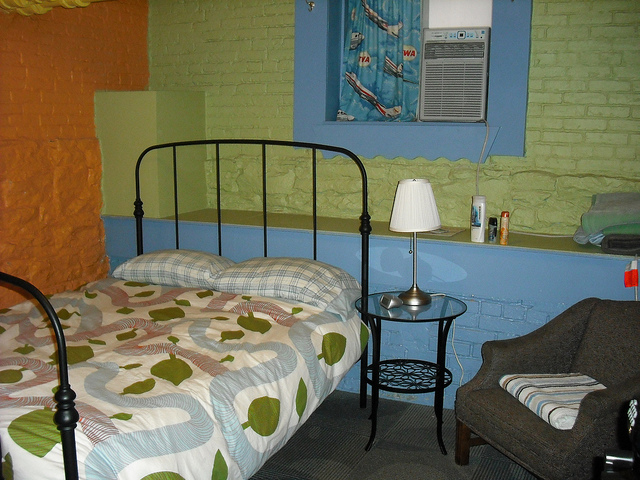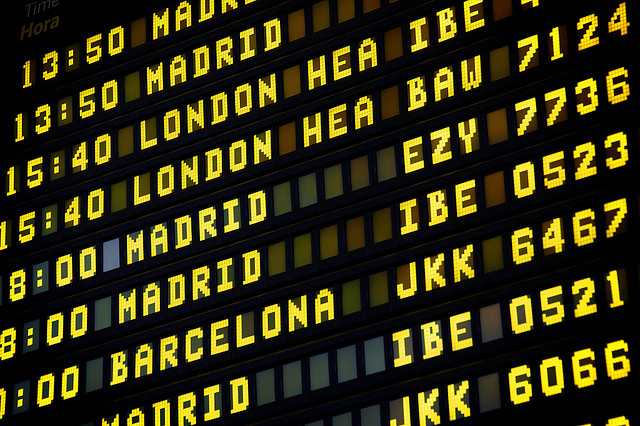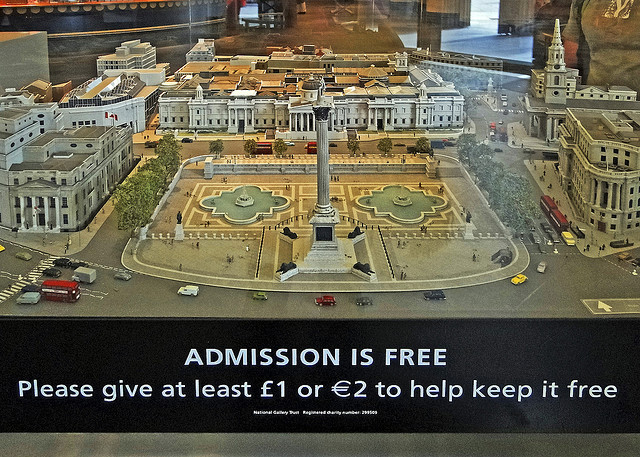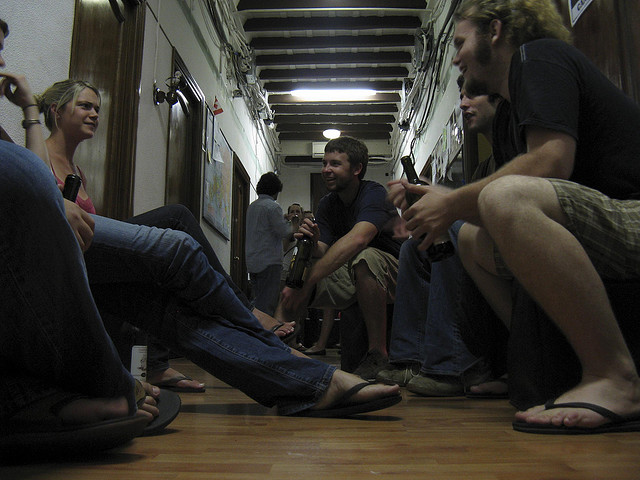If the euro versus US Dollar exchange rate situation was a boxing match then the referee would have stopped it a few rounds ago, but this is no boxing match and greenback-holders continue to get pummeled. Should you cancel your trip to Europe and hope things are better next year? No, because it might actually be worse, and there are ways to have an excellent trip without spending your last dime in the process.
Depending on your travel style you might already be incorporating some great money-saving techniques, but many travelers, especially if they are new to the game, will spend much more than they need to without having any more fun. In many cases traveling like a cheapskate will actually bring you much closer to the real Europe you hope to experience anyway.
Below are some of BootsnAll’s favorite money-saving tips for European travel. You certainly don’t need to consider doing all of them, but if you pick a few that fit into your style you should be able to have an incredible time in Europe without having drain your entire bank account in the process.
[social]
1 – Buy and use a good guidebook
All travel guidebooks have their advantages, but for saving money in Europe some are far better than others. Our favorite for this purpose is the Rick Steves series, which covers Europe like a blanket. The guides are filled with extremely useful advice and trustworthy and opinionated reviews, so as long as you actually read the thing you should easily be able to save far more than the price of the book itself. One major strength of the series is the books highlight quality hotels in each city that are normally reliably affordable to begin with, and then sometimes negotiate special additional discounts if you mention the book when reserving your room. You’ll often save €10 or more per night at a well-located hotel, so after two nights of this you’ve already paid for the book, but there are plenty of other great tips in each edition as well.
If Rick Steves isn’t your style then either Lonely Planet or Rough Guides are also great choices. They each include loads of helpful information about hostels, budget hotels, cheap meals, and public transportation as well. If you are covering more than a few countries and your budget is limited you might be better off with Lonely Planet’s Europe on a Shoestring guide. This thick tome is jammed with great advice on the cheapest possible way to do just about anything on your trip. It’s literally written with poor backpackers in mind so it might undershoot some things for most people, but it’s a great tool for those on the tightest budgets.
>> Supplement your guidebook with alternative trip planning resources
2 – Master (or at least use) public transportation in Europe
Only a few cities in North America can even come close to the public transportation systems that are found in virtually every city in Europe. Especially if this is your first trip and even more so if you don’t speak the language of the country where you are visiting, trying to figure out how to use public transportation abroad can be intimidating and even embarrassing. But get over your fears and you’ll save a bundle. Taxis in Europe range from expensive to outrageous and that’s partly by design. Any good guidebook will explain everything you need to know, and you definitely won’t be the only person there who is unsure of yourself on your first ride.
The most important single part of this equation is airport transportation. Sure, you’ll probably be arriving in the morning after not getting enough sleep on the flight, but in many cases getting into the city center on public transportation is faster and much cheaper. Nearly every major European city has its main airport on either their local public transportation line or on their rail network, so a knee-jerk dash to the airport taxi stand might cost both time and money. For example, land in Amsterdam and a taxi into the city center will cost between €40 and €50 and take 30-40 minutes depending on traffic, but the train leaving just below the airport gets you to the city center in under 20 minutes for €3.60 per person. It can be a bit of a hassle if you over-packed, but we are talking about small sacrifices to save big money.
>> Check out eight unusual public transport systems around the world
3 – Self-cater one meal a day
Feeding yourself on vacation is always a big expense, though it’s one of those things that tends to creep up on you – a euro here, a euro there, and suddenly you’ve got to stop at the bank machine again. When you’re at home you don’t eat out for every meal, and there’s no reason you need to when you’re on vacation in Europe, either. Nearly every city will have at least one day a week where there’s an open-air market that springs up (some larger cities will have several, in different neighborhoods). While you can often buy everything from clothing to cleaning supplies at these markets, there are also great food stands as well.
Gather up a fantastic picnic lunch by buying a wedge of cheese from the cheese vendor, a few apples or mandarins from the fruit and vegetable vendor, a hunk of cured sausage from the meat vendor and a crusty loaf of bread from the baker. Add a big bottle of water (or, even better, a bottle of wine!) and you’ve got the perfect picnic lunch. What’s more, you’ve added a thoroughly local experience to your vacation memories.
>> Discover 11 delicious street foods around the world
4 – Look into tourist discount cards
Some cities will offer special passes for visitors that get you discounts on certain combinations of tourist attractions. If you’re planning to visit all of the sights included on the pass anyway, it’s likely that buying the pass rather than individual tickets can save you a euro or two on each attraction. In some cities, these passes can also include the use of public transportation and discounts in certain tourist shops as well. They often come in increments of a few hours to a few days, so you can figure out which pass works best for your particular stay in that city. Ask about them at the tourist information office, and if you choose to buy one (and the TI doesn’t sell them), go to a less-visited sight first to buy your pass – you’ll get the same pass you would elsewhere, but it’s likely you won’t have to stand in the same long lines at the most popular sights in order to buy it.
5 – Check out private rooms in hostels
If hotel prices you are finding make you wonder if they are trying to sell you the room instead of just rent it to you for one night, it’s time to check out Europe’s thriving hostel scene. These places became famous for having large dorm rooms filled with random young backpackers, but the hostel situation all over the world has been changing rapidly. These days not only are age limits virtually extinct, but nearly every hostel has private rooms in addition to the dorms. Some have en-suite bathrooms and others have private bathrooms down the hall, and they are probably nicer than you expect.
A private room in a hostel will almost always be cheaper than a stark 1-star hotel nearby, and they also have shared kitchens so you can prepare a meal or two a day to save even more money. Hostels will also often have planned activities like city tours or pub-crawls, and those will usually save you additional money and make you a few new friends in the process.
>> Read about what separates a great hostel from an average one
6 – Consider a Eurail pass instead of buying individual tickets
Depending on what country or countries you’ll be visiting, getting a Eurail pass before you leave home can save money over buying individual tickets as you go. This is especially true if you’ll be taking lots of long-distance, high-speed or overnight trains, all of which cost more. You’ll still have to buy reservations along the way, but you’ll save money over buying tickets for these more expensive trains. Alternatively, concentrate on taking the trains that don’t require reservations – they’re slower, but for those of you with more time than money to play with, they’ll still get you there and you’ll save a bit of money in the process.
>> Learn how to save money on train tickets in Europe
7 – Be aware of the different options for getting around Europe
The super efficient European train system is famous around the world, and if you are going to multiple countries you should consider a rail pass, which is discussed above. But if you are only making one or two hops you should know that Eurolines buses also connect every big city in Europe and they are usually cheaper and only a bit slower than the rails. Right now the train between Paris and Barcelona takes 12 hours and the cheapest 2nd-class fare is US$110, while the bus takes about 14.5 hours and will cost US$75. European buses tend to be nicer and less depressing than Greyhound buses in the States, and the routes usually take you through interesting areas as well.
Europe is also now filled with low-cost airlines so sometimes a short flight will be the cheapest option of all. The key to low fares on these airlines is booking early, so if you book long before you get to Europe they can be extremely cheap. The point is that if your budget is tight and you do some research ahead of time you can often save money by getting around in ways that might not be obvious at first.
>> Find out how to make sure your budget airline ticket is really a deal
8 – Find out what sights have free entry times/days
This might seem like a long-shot, but some museums and other sights in some cities have certain days of the week, or hours of the day, when the entry fee is either discounted or eliminated completely. Often the hours that are discounted are the last couple hours the museum is open, so it may limit the amount of time you have to spend there, but if you’re only planning for a quick visit anyway it can be a huge money-saver. For instance, in Paris the Louvre offers a €2-3 discount for visitors who arrive on Wednesday and Friday evenings, the museum is free to everyone on the first Sunday of each month and every July 14. The best way to find out about these potential discounts is to check the websites of the attractions you want to visit and checking their hours/admissions page for details. You could also ask at the local tourist information office.
>> Find out which eight paintings every traveler should see
9 – Mix in the free sights with the ones that have entry fees
In every city or town, there is bound to be something worth visiting that doesn’t cost a thing – whether it’s a church or cathedral, or a small local museum, or whatever, it’s probably not going to be the best of its variety you’ve ever seen, but it’s free! Of course, in most of these cases you’re encouraged to make a donation, but even if you do that you’re paying a fraction of what you’d pay if there were an actual admission fee. As an added bonus, during the hot summer weather, places like old stone churches and cathedrals tend to be nice and cool inside, giving you a nice break from the sun.
>> Learn about ten free ways to discover your world
10 – Start the party before you go out for the evening
Going out for drinks even in southern Europe is expensive for Americans this year, and buying cocktails in northern Europe has always been outrageous even at better exchange rates. You might have done this in college and if so you know it can be fun and a big money saver to have a couple of “warm-up” drinks before going out. Every country in southern Europe has very drinkable wines at shockingly low prices, and every country in the north has excellent beer available in stores for a small fraction of what you’ll pay for the same thing in a bar or club. Ask at your hotel or hostel and you’ll probably discover that you are only a block or two from a place where you can pick up your own supply to save loads of cash while still getting blotto as you spread the joy out on the town later on.
>> Read about places to make drinking part of your cultural experience
11 – Bring your International Student ID card (if you have one)
If you’re a student, it’s a good idea to look into getting an International Student ID card (ISIC) before you leave home. There are often discounts for students at main attractions, and if you’re planning to visit many of the big museums, churches or galleries you could save money by investing in an ISIC. Again, check the websites of the attractions you want to visit to see what the discounts are for students to determine whether the cost of an ISIC is worth it.
Read more about summer travel in Europe:
- 5 Summer Travel Tips for France
- 5 Summer Travel Tips for Greece
- 5 Summer Travel Tips for Italy
- How to Make the Most of Your Summer Travel Budget
Photos by agroffman, E. E. Piphanies, Orin Zebest, Cecil Lee, ErynCelise, weesen, kozumel, fmpgoh, Grufnik, fellowaperman, 4nitsirk

